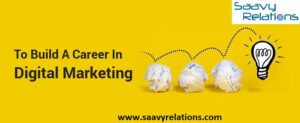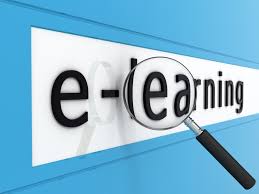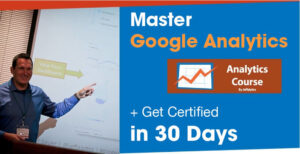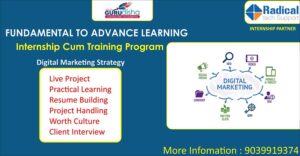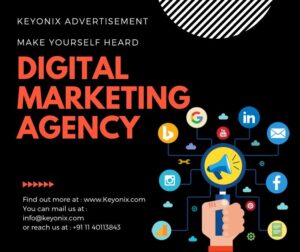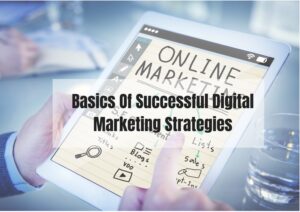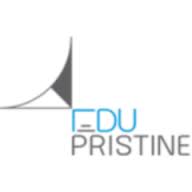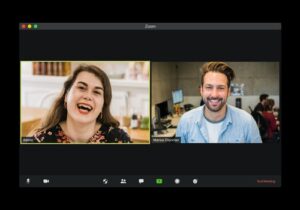What is a Skill?
What is the Skill?
A skill is a learned ability to carry out a task with pre-determined results from within a given amount of time, energy, or both. In other words, it’s the power that one possesses. There are two types of skills:
Domain General Skills
These skills are Time Management Skills, Teamwork and leadership skills, Self Motivating skills, and so on.
Domain-Specific Skills
These Skills are useful only for certain jobs like software developer, Car- mechanic, etc.
Skills require certain environmental stimuli and situations to access the level of skill being shown and used.
What are the different types of Skills?
We possess and develop different types of skills throughout our life:
Labor Skills
Skilled workers have long historical importance as electricians, carpenters, printers, etc.
Life Skills
These are a set of human skills acquired via learning or direct experience that are used problems and questions commonly encountered in daily life.
People Skills
These Skills require us to understand ourselves. These skills help us to build relationships of trust, respect, and productive interaction.
Social Skills
Soft Skill may be a Sociological term concerning a person’s “E.Q.”(Emotional Intelligence Quotient), the cluster of personality traits, Social graces, communication languages, Personal habits, friendliness, and optimism that characterize relationships with other people.
Hard Skills
Hard Skills are any skills concerning a selected task or situation. Unlike Soft Skills, these skills are easily quantifiable.
Transferable Skills
Transferable Skills are usually associated with the skill sets that can be easily transferred from one job to another. For Example, Good listening skills, Interpersonal skills are important in all aspects of life.
Mastering Skills
Mastering pertains to perfecting a particular skill set.10; 000 hours will have to be put into training.
What type of Soft Skills do the Employers want?
Here are a few of the critical employability skills that employers demand from Job-Seekers.
Communication Skills
Communication skills are listening, verbal and writing skills that are required by every employer. Successful communication is critical for business.
Analytical/Research Skills
Analytical Skills deals with your ability to access the situation, seek multiple perspectives, gather more information, and identify key issues to be addressed.
Computer/Technical Literacy
Almost all jobs require some basic understanding of computer hardware/software.
Flexibility/Adaptability
Deals together with your ability to manage multiple assignments and tasks, set priorities and adapt to changing conditions and work assignments.
Interpersonal Abilities
The ability to relate to your co-workers, inspire others to participate, and mitigate conflict with co-workers is essential given the amount of time spent at workday.
Leadership/Management Skills
These skills affect your ability to vary and manage your workers.
Multicultural Sensitivity/Awareness
There is possibly no bigger issue within the workplace than diversity, and job-seekers must demonstrate a sensitivity and awareness of people and cultures.
Planning/Organizing
This Skill deals with your ability to design, plan, organize, and implement projects and tasks within a given time.
Problem solving, Reasoning, Creativity
These Skills involve your ability to seek out solutions to problems using your Problem-solving Skills, Creativity, Reasoning, and Past experiences alongside the available information and resources.
Teamwork
This Skill incorporates your ability to work with others in a professional manner by attempting to achieve common goals.
What are the Personal Values that Employers seek in Employees
Of equal importance to skills are the values, personality traits, and private characteristics that employers seek.
Here is our list of the ten most vital categories of values.
Honesty/Integrity/Morality
Employers probably respect personal integrity quite the other value, especially in light of the various recent corporate scandals.
Adaptability/Flexibility
Deals with openness to new ideas and ideas, to working independently or as a part of a team, and to complete multiple tasks or projects.
Dedication/Hard-working/Work Ethic/Tenacity
Employers seek job-seekers who love what they are doing and can keep at it until they solve the matter and obtain the work done.
Dependability/Reliability/Responsibility
There’s no question that each employer desire employees who will arrive to figure a day — on time — and prepared to figure, and who will take responsibility for his or her actions.
Loyalty
Employers want employees who will have a robust devotion to the corporate – even sometimes when the corporate isn’t necessarily loyal to its employees.
Positive Attitude/Motivation/Energy/Passion
The job-seekers who get hired and therefore the employees who get promoted are those with drive and keenness — and who demonstrate this enthusiasm through their words and actions.
Professional
Deals with acting in a responsible and fair manner altogether your personal and work activities, which is seen as a symbol of maturity and self-confidence; avoid being petty.
Self-Confidence
Look at it this way: if you do not believe yourself, in your unique mixture of skills, education, and skills, why should a prospective employer? Be confident in yourself and what you’ll offer employers.
Self Motivated/Ability to work with little supervision
While teamwork is usually mentioned as a crucial skill, so is that the ability to figure independently, with minimal supervision.
Willingness to learn
No matter what your age, regardless of what proportion experience you’ve got, you ought to always be willing to find out a replacement skill or technique. Jobs are constantly changing and evolving, and you want to show an openness to grow and learn thereupon change.
Employability Skills and private values are the critical tools and traits you would like to achieve in the workplace. You can learn, cultivate, develop, and maintain over your lifetime.
Once you’ve got identified the foremost sought skills and values, access the degree you’ve got possessed, then must be ready to document them and market them(in your resume, covering letter, and Interviews) for job search success.
What are Soft Skills Gap
- Problem-solving, delegating, motivating and team building are all much easier if you’ve got good soft skills.
- Knowing the way to get alongside these people and displaying a positive attitude are crucial to success.
- When your workforce has lots of technical skills but the absence of soft skills, you have a Soft Skills gap.
- If you are really good at hiring clients but not good at retaining them, there are chances you have a soft skills gap.
- You have lots of staff turnover and have to keep retraining people, chances are you have a soft skill gap.
- You have lots of managers but no real leader in your organization, you may have a soft skills gap.
Soft skills must accompany the hard skills and help a corporation to grow competitive and more productive.
How to Develop Soft Skills you need for Life
Whether you’re at work, an employment seeker, a student, a teacher, a parent, or simply curious about developing your key skill, you’ll need to develop essential life skills to improve your personal and professional life.
Personal Skills for body and mind
Personal skills are the talents you would like to take care of a healthy body and mind. These skills are essential building blocks for all other skills. Learn some key skills that will help you to feel more energized, feel better about yourself, be more motivated, and increase your self-confidence.
Personal Development
Personal development is a lifelong process. It’s how for people to assess their skills and qualities, consider their aims in life and set goals so as to understand and maximize their potential.
Practical steps are often taken to reinforce personal development, including:
- Organizing your time
- Producing a personal CV or résumé
- Undertaking a skills appraisal
- Looking at your transferable skills
- Overcoming barriers to learning a new skill.
Personal Empowerment
At a basic level, the term ’empowerment simply means ‘becoming powerful. Building personal empowerment involves reflecting on our personal values, skills, and goals and being prepared to regulate our behavior so as to realize our goals.
Personal empowerment also means being aware that other people have their own set of values and goals which may be different from ours.
- Personal empowerment gives an individual the ability to:
- Take control of their circumstances and achieve their own goals in their personal and dealing life.
- Become more aware of their strengths and weaknesses and therefore be better equipped to deal with problems and achieve goals.
- Enhance the contribution they create both as a private and as a member of a team.
- Take opportunities to reinforce personal growth and a way of fulfillment. Developing personal empowerment usually involves making some fundamental changes in life, which isn’t always a simple process. The degree of change required will differ from person to person, depending on the individual starting point.
Lifelong Learning
- Most people associate learning with formal education at college, college, university, etc.
- Knowledge are often acquired and skill-sets developed anywhere – learning is unavoidable and happens all the time. However, lifelong learning is about creating and maintaining a positive attitude to learning both for private and professional development.
- Lifelong learners are motivated to find out and develop because they need to: it’s a deliberate and voluntary act.
- Lifelong learning can enhance our understanding of the world around us, provide us with more and better opportunities and improve our quality of life.
- There are two main reasons for learning throughout life: for private development and for professional development. These reasons may not necessarily be distinct as personal development can improve your employment opportunities and professional development can enable personal growth at an early age..
Personal Change Management skills
“God, grant me the serenity to simply accept the items I cannot change, the courage to vary the items I can, and therefore the wisdom to understand the difference.” – Niebuhr (1892–1971).
Why do some people seem to sail gently through all the changes life throws at them, while others get upset if they need to vary even their breakfast cereal?
The key’s in how you view change and your level of acceptance of uncertainty.
There is no evidence that what we discover most stressful as the citizenry is uncertainty, not change in itself. Even the foremost difficult life events, like divorce or marital separation, are often more stressful in terms of uncertainty.
Reflective Practice
“Reflective practice is a lively, dynamic action-based and ethical set of skills, placed in real time and handling real, complex and difficult situations.” – Moon, J. (1999)
Reflective practice is, in its simplest form, brooding about or reflecting on what you are doing. It is closely linked to the concept of learning from experience, therein you think that about what you probably did, and what happened, and choose from that what you’d do differently next time.
Self Motivation
Self-motivation is, in its simplest form, the force that drives you to try to do things.
Self-motivation may be a key life skill and something that everyone curious about personal development should think twice about.
Motivation pushes us to realize our goals, feel more fulfilled and improve overall quality of life. People who are self-motivated tend to be more organized, with good time management skills and have more self-esteem and confidence.
Understanding and developing your self-motivation can assist you to require control of the many other aspects of your life.
Critical Thinking Skills
Critical thinking could be described because of the ability to interact in reflective and independent thinking.
Someone with critical thinking skills can:
- Understand the logical connections between ideas
- Identify, construct and evaluate arguments.
- Detect inconsistencies and common mistakes in reasoning.
- Solve problems systematically.
- Identify the relevance and importance of ideas.
- Reflect on the justification of one’s own beliefs and values.
- Critical Thinking maybe a way of brooding about particular things at a specific time.
Creative Thinking
How is it that some people always seem to be ready to generate new ideas and think creatively, et al. seem to struggle to try to do so?
Although initially glance, creativity techniques may sometimes look a touch ridiculous, there are good principles behind most of them.
Here are a few of the many techniques available.
Brainstorming
“The best thanks to having an honest idea is to possess many ideas.” – Pauling – Double Nobelist, chemist, biochemist, and peace campaigner.
Engaging your Right Brain
Much research has been done over the years on the way during which the 2 sides of the brain work differently.
The left side of the brain is supposedly focused on logic and order.
The right side of the brain focused on the more ‘messy’, creative, and innovative aspects.
Mind mapping
Mind mapping may be a technique originally created by Tony Buzan and adapted by many others.
This technique uses words connected with arrows or lines. It’s an honest way of representing an outsized amount of interconnecting information in a fairly compact way, and lots of people also use it for planning presentations or taking notes in meetings.
Mind maps usually start with a single word in the center, and connected ideas and concepts radiating out via branches.
Role-Play Situations
Role-play situations are probably the ‘Marmite’ of management development courses: you either love them otherwise you hate them. But love them or hate them, they will have some dramatic results.
Neuro-Linguistic Programming(NLP)

Neuro-Linguistic Programming, or NLP, provides practical ways during which you’ll change the way that you simply think, view past events, and approach your life. It shows you ways to require control of your mind, and thus your life. Unlike psychoanalysis, which focuses on the ‘why’, NLP is extremely practical and focuses on the ‘how’?
NLP was co-created by Richard Bandler, who noticed that conventional psychotherapy techniques didn’t always work and were curious about trying alternative ways.
NLP works from the start line that you simply might not control much in your life, but that you simply can always take hold of what goes on in your head.
Your thoughts, feelings, and emotions are not things that are, or that you have, but things that you do. Their causes can often be very complicated, involving, as an example, comments or beliefs from your parents or teachers, or events that you simply have experienced.
NLP shows you how you can take control of these beliefs and influences. Using mind techniques such as visualization, you can change the way that you think and feel about past events, fears, and even phobias.
You can’t always control what happens, but you’ll always control how you affect it
Emotional Intelligence (EI)
Many folks are conscious of IQ (Intelligence Quotient) an individual’s score when performing a series of tests designed to live intellectual intelligence. Higher IQs indicate better cognitive abilities – these include the power to find out and understand – and other people with higher IQs are more likely to try to do well academically, without exerting an equivalent amount of mental effort as those with lower IQ scores.
A logical assumption, therefore, is that folks with higher IQs are going to be more successful at work and thru life. This assumption has been proven incorrect – there’s more to success than simply being ‘clever.
Emotional Intelligence (EI or sometimes EQ – Emotional Quotient) may be a more modern concept and was only fully developed within the mid-1990s.
Emotional Intelligence is that the measure of an individual’s abilities to acknowledge and manage their emotions, and therefore the emotions of people, both individually and in groups.
People with higher emotional intelligence find it easier to make and maintain interpersonal relationships and to ‘fit in’ to group situations.
People with higher EIs also are better at understanding their own mental state, this will include managing stress effectively and being less likely to suffer from depression.
Living Ethically
There is a proverb that no one looked back from their deathbeds and said that they wished that they had spent longer within the office.
Aristotle suggested that you could look back and say that you had lived a ‘good’ life if you had shown:
- Courage, and not cowardice or impulsiveness and extreme risk-taking;
- Self-control, instead of self-indulgence or selfishness;
- Generosity, and not waste resources or opportunities;
- Friendliness and politeness, not rudeness, flattery, or other unpleasantness towards others;
- Tact and discretion;
- Truthfulness and integrity;
- Good temper, even in the face of provocation; and
- Fairness
Aristotle described these as the ‘virtues’ by which he believed people ought to try to live.
Self Control
Self-control is that the ability to regulate oneself, in terms of getting mastery over one’s desires and appetites. Those who are self-controlled can temper what they need, to make sure that they are doing not over-or under-indulge.
Self-controlled people are often thought of as having acquired three habits.
Self-Preservation
People having this skill have a healthy attitude towards ‘things’ and focus on what they need in order to live, rather than what they want. They use what they have to complement their lives, but don’t overindulge. Such people don’t attempt to exploit others in any way.
Self-Assertion
They know their own value and are comfortable in saying what they think in a way that permits others to talk to. They are firm but gentle with others and don’t put themselves or others down.
Self-Fulfillment
The thanks to self-fulfillment are closely linked to resilience. Those with self-control are able to understand that it is important to persevere with difficult activities if you are to develop skills in them. However, if you do persevere, you will learn the skill and will get pleasure from it.
Developing Resilience
Resilience is that the ‘rubber ball’ factor: the power to recover within the event of adversity.
Put simply, resilience is that the ability to deal with and rise to the inevitable challenges, problems, and setbacks you meet within the course of your life and are available back stronger from them.
Resilience relies on different skills and draws on various sources of help, including rational thinking skills, physical and psychological state, and your relationships with those around you.
Resilience isn’t necessarily about overcoming huge challenges; each folk.
Improving Self Esteem
You may consider it as your inner voice – the voice that tells you whether you’re ok to try to or achieve something. Self-esteem is about how we value ourselves, our perceptions, and our beliefs in who we are and what we are capable of. Our self-esteem can be misaligned with other people’s perceptions of who we are.
Assertiveness
Assertiveness means standing up for your personal rights. expressing thoughts, feelings, and beliefs in direct, honest, and appropriate ways. It concerns being able to express feelings, wishes, wants,s, and desires appropriately and is an important personal and interpersonal skill.
In all your interactions with people, whether reception or at work, with employers, customers, or colleagues, assertiveness can assist you to precise yourself in a clear, open, and reasonable way, without undermining the rights of yourself or others.
Time Management
The way that we manage our time features a direct effect on how we feel. This topic outlines some of the ways you can improve your effectiveness at getting things done – achieve more and feel more motivated and self-confident. Priorities categorize and organize some time to maximum benefit
Minimizing Distractions and Time Wasters
There are many things in life that will, potentially, waste tons of your time. By minimizing distractions and removing time-wasters from our day we can accomplish more and potentially become more successful.
Avoid Procrastination
- Chambers English Dictionary defines procrastination quite simply as “to postpone till some future time, to defer”.
- Procrastination is, therefore, nothing to try to do with the relative pleasantness of the task, but simply the physical deferral to a later stage.
- Sometimes it’s because the task is unpleasant and they’d rather be doing something else.
- Sometimes, they don’t really know how to do a task and so are avoiding it.
- Perfectionists often procrastinate, because they’re unsure they need the time or capacity to try to do a task perfectly.
- Other people may struggle because they’re unsure exactly what task to try to do.
- Sometimes procrastination can be helpful!
Interpersonal Skills
Interpersonal skills are the life skills we use a day to speak and interact with people, both individually and in groups. People who have worked on developing strong interpersonal skills are usually more successful in both their professional and private lives.
Communications
Communication is just the act of transferring information from one place to a different.
The different categories of communication are:
- Spoken or Verbal Communication
Face-to-face, telephone, radio or television, and other media. - Non-Verbal Communication
Body language, gestures, how we dress or act – even our scent. - Written Communication
Letters, e-mails, books, magazines, the Internet, or other media. - Visualizations
Graphs and charts, maps, logos, and other visualizations can communicate messages. - Presentation Skills
Learn how to plan, organize, write, and deliver a presentation. Follow the tips and step-by-step guide to improve your presentation skills and reduce your nerves.
Presenting information clearly and effectively may be a key skill to urge your message or opinion across and, today, presentation skills are required in almost every field. - Leadership Skills
Whether we love it or not, at some point in our lives we’ll almost certainly need some fundamental leadership skills. Learn how to become a more charismatic and successful leader.
The ability to steer effectively is predicated on a variety of key skills. These skills are highly wanted by employers as they involve handling people in such how as motivate, enthuse, and build respect.
Leadership roles are all around us, not just during a work environment. - Writing Skills
The ability to write coherently and correctly is important both in your job/business and in your personal life.
Writing skills are an important part of communication. Good writing skills allow you to speak your message with clarity and ease to a far larger audience than through face-to-face or telephone conversations. - Numeracy Skills
The word ‘mathematics’ is scary for a lot of people; many people have a less than perfect understanding of basic numeracy and moths. By developing some basic numeracy skills you can save time and money, analyze and understand data and as a result improve your well-being.













